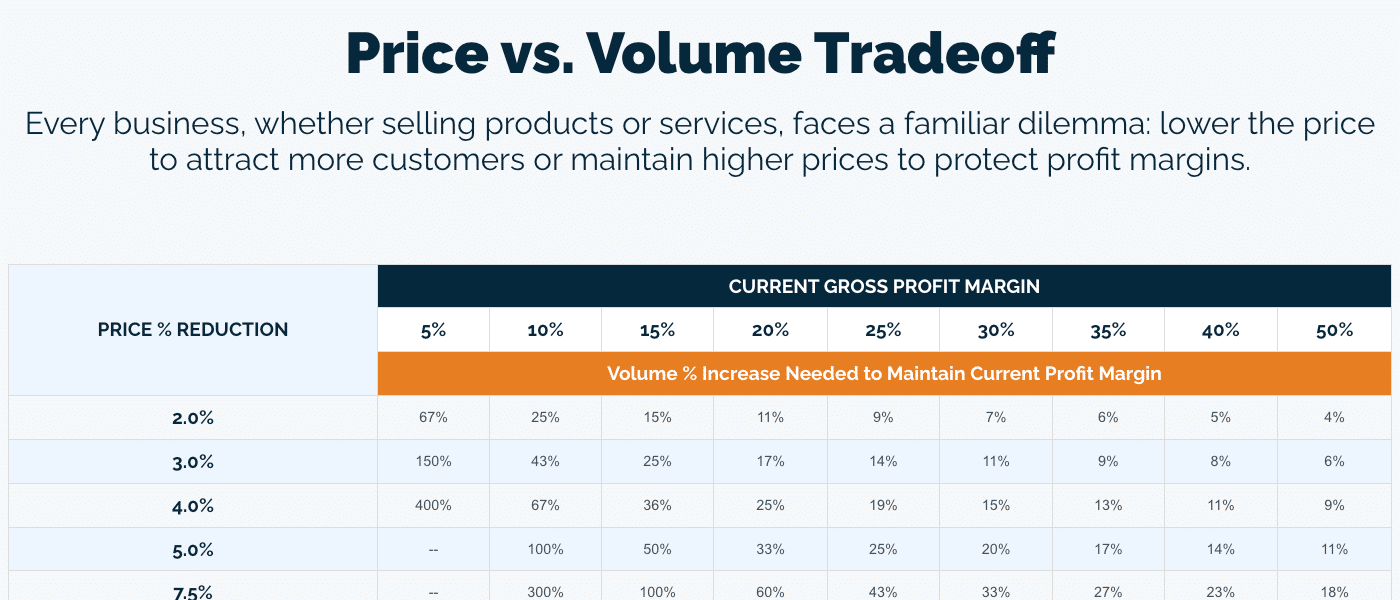The Best and Worst SaaS Pricing Models

Pricing can make or break the financial success of a SaaS business, so why does the average company only spend 6 hours defining their pricing strategy? The wrong pricing model can produce long-term side effects that will undoubtedly impact profitability. Undercharge for a product or service and you risk paralyzing your growth. Overcharge and you drive away customers and hinder progress.
To help you determine the optimum way to market, sell and grow your SaaS business, we’ve compiled the best—and worst—SaaS pricing models. Read on to learn the pros and cons of different approaches to pricing and how each one can impact your revenue and influence profitability.
Cost-Plus Pricing Model
Cost-plus pricing is as straightforward as it gets. To determine price using the cost-plus pricing method, you take the amount of money it costs you to produce a product and add a target profit margin to those costs. This number becomes the price for your product.
Although the ease of cost-plus pricing may be tempting, any SaaS business looking to optimize their profits should stay away from this pricing model. Since the value your product provides is traditionally much more than the cost of doing business, a cost-plus pricing model puts you at risk of significant profit loss.
Cons of Cost-plus Pricing
- Incomplete Picture | Cost-plus pricing doesn’t take competitor pricing, perceived value, customer price sensitivity, or any of the other inputs that influence pricing.
- Not Consumer-focused | If a company determines their prices solely off unit cost and a predetermined markup, they ignore willingness to pay and run the risk of losing out on potential profits.
Cost-plus pricing isn’t all bad news. There are some obvious advantages to such a simple strategy:
Pros of Cost-Plus Pricing
- Assured Profits | By choosing to determine price by adding a markup to a product’s unit cost, a company ensures they will make a profit with every sale.
- Transparent | In the case of a price hike, a SaaS business can point to an increase in unit costs to justify the new price.
Competitor-Based Pricing Model
Although it may seem like a handy shortcut, basing your pricing model off your competition’s pricing strategy is not always the best option for SaaS products.
Cons of Competitor-Based Pricing
- Half the Picture | Competitive pricing does not take demand or perceived consumer value into consideration. By not evaluating willingness to pay, companies that use this strategy run the risk of leaving money on the table.
- Inflexible | When a SaaS business relies on their competition to set their prices, they are assuming that competitor is using accurate research to find the best price for their product.
It may seem obvious now that utilizing your competition’s pricing strategy as a foundation to build a viable pricing structure for your own goods and services is risky, but it isn’t without certain advantages:
Pros of Competitor Based Pricing
- Efficient | With minimal research required, companies can implement a low-risk pricing strategy quickly with significantly less effort than more data-driven strategies.
Flat-Rate Pricing Model
Flat-rate pricing is one of the more straightforward ways to price a SaaS product. With flat rating pricing, you offer one single product with a single set of features at one singular price. This model for pricing, although simplistic in nature, leaves no room for nuance or flexibility with would-be customers. Limited options and the lack of customization capabilities makes flat-rate pricing a less than ideal model for SaaS products.
Cons of Flat-Rate Pricing
- No Customization | With flat-rate pricing you run the risk of chasing away potential customers by not offering different ways to interact with and purchase your product.
- Not Scalable | When you opt for a flat-rate price that focuses on small and medium sized customers, you may unintentionally leave a fortune in profits on the table if a large enterprise chooses to adopt your SaaS product.
Although other pricing models like per-user and feature-based pricing offer significantly more customization and flexibility, there are still benefits to flat-rate pricing that are worth noting:
Pros of Flat-Rate Pricing
- Easy to Sell | When you only sell one product at one price you can focus all your marketing efforts on that one offer. Essentially, instead of having to spread your advertising dollars across multiple products, with a flat-rate pricing model you can prioritize one single message.
- Easy to Understand | Pricing models that have multiple different tiered offerings at multiple different prices can get complicated for potential customers. A flat-rate pricing model simplifies the selection process and makes selecting a product quick and easy.
Tiered Pricing Model
Tiered pricing is one of the most popular pricing models used by SaaS companies. In essence, tiered pricing enables companies to offer multiple products or “packages” that feature different combinations of tools at differing price points.
Pros of Tiered Pricing
- Optimized for Multiple Personas | Tiered pricing allows you to tailor packages to suit multiple different buyer personas.
- Less Money Left Behind | Tiered pricing employs willingness to pay to maximize the revenue potential of different types of customers.
- Upsell Opportunity | With tiered pricing, when a user grows beyond their current package, they have a direct route to the next price point.
Although tiered pricing is one of the more popular SaaS pricing models, it is not without drawbacks.
Cons of Tiered Pricing
- Too Many Options | Unless the options are kept in check, too many packages to choose from (typically anything more than 3.5) can lead to confusion and an abandoned sale.
Per-User Pricing
A recent study by Key determined that per user pricing is among the most popular pricing models used by SaaS companies. With per user pricing, one user pays one price. If another user is added, the price goes up, and so on.
Pros of Per-User Pricing
- Easy to Understand | With per user pricing, it is extremely easy for customers to understand exactly what their subscription buys them.
- Easy to Predict Revenue | Since per user pricing is so straightforward, it makes it easy for SaaS companies to manage and predict their revenue.
Like every pricing model, there are disadvantages to per user pricing.
Cons of Per User Pricing
- Limits Adoption | By charging per person, there is an incentive to avoid adding more users, which could impact growth.
- Ignores Value | The ability to add new users does not necessarily increase the value of the service to the existing user. Per user pricing may as a result diminish the perceived value of the product.
Feature-Based Pricing Model
Feature-based pricing creates different pricing tiers according to the number of tools and software features available in each. The more features the user opts-in for, the higher the price of the package.
Pros of Feature-Based Pricing
- Upsell Capabilities | With feature-based pricing, there is a clear incentive for upgrading: more functionality.
- Fair Compensation | Like any business, some SaaS features may require a disproportionate amount of resources to deliver. By implementing a feature-based pricing structure, you ensure you are fairly compensated for your more laborious offerings.
Although feature-based pricing works particularly well with SaaS products, it isn’t completely immune to some more obvious drawbacks.
Cons of Feature-Based Pricing
- Complicated | It takes time and research to determine which features your audiences want and value the most. This makes it difficult to optimize a feature-based pricing structure.
- Churn | Some customers may be unwilling to pay more for additional features and may get frustrated with gated access. This frustration does have the potential to cause customers to abandon the service.
Determining Which SaaS Pricing Model is Best
Your pricing model is the foundation of your SaaS business. A well thought out, data-driven strategy will enable you to build out sales processes and generate revenue. The possible pricing strategies in this article, though, are just the tip of the iceberg.
At INSIGHT2PROFIT, we believe developing an effective pricing strategy is as much art as it is science. Our pricing experts have the depth and breadth of experience necessary to design customized SaaS pricing solutions built for success. If you need help determining which model is right for your product, contact us. Together, we can help your SaaS business implement strategic pricing adjustments and maximize revenue.


